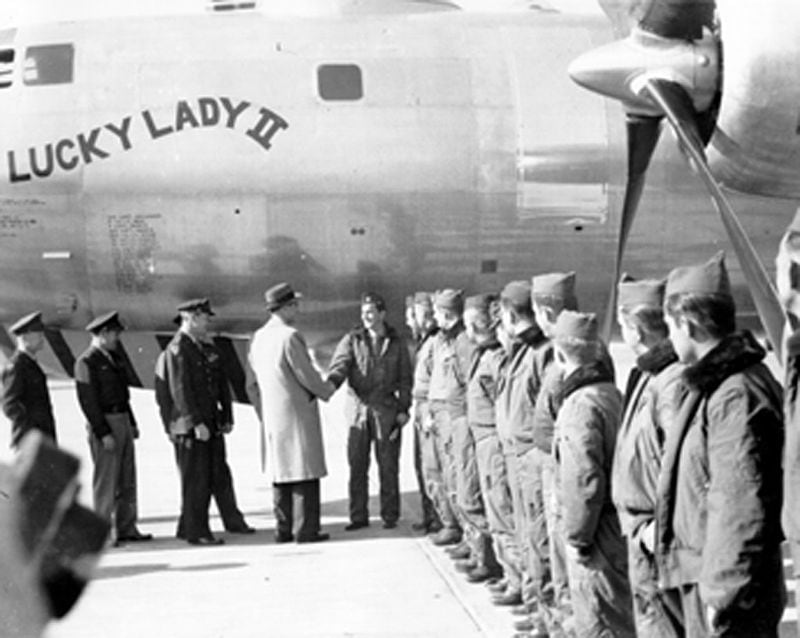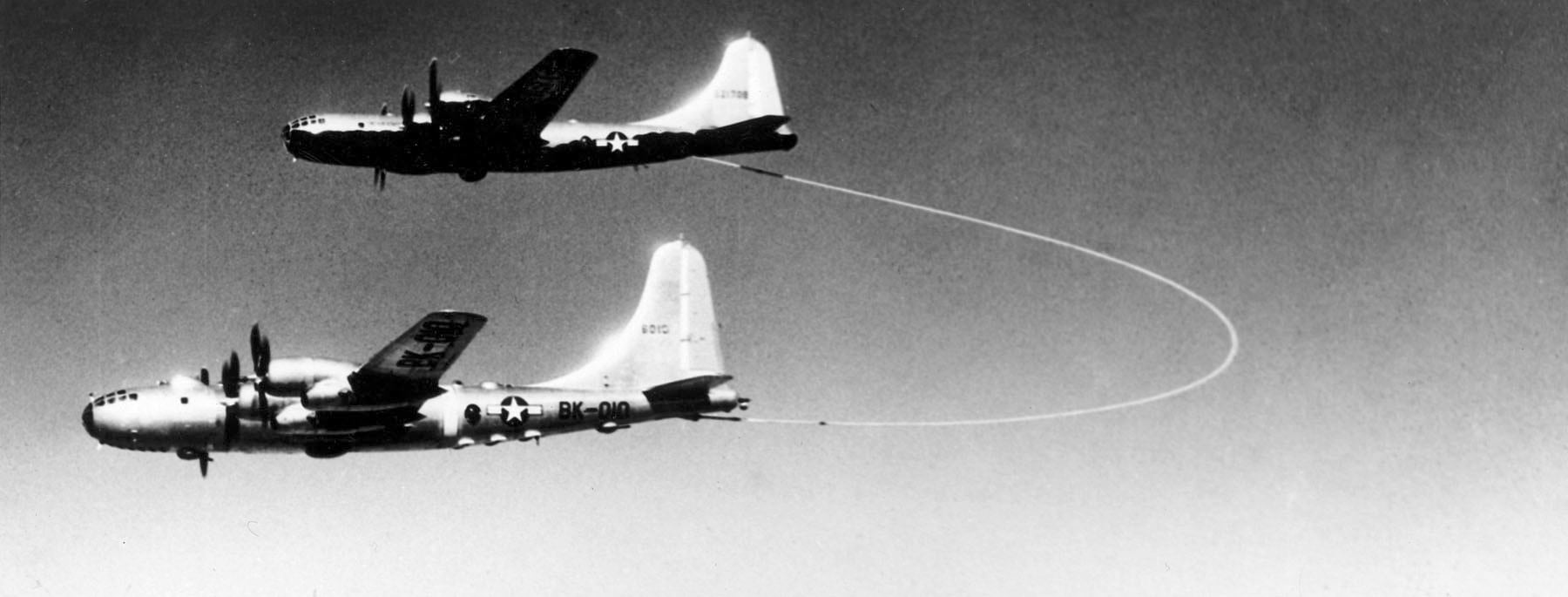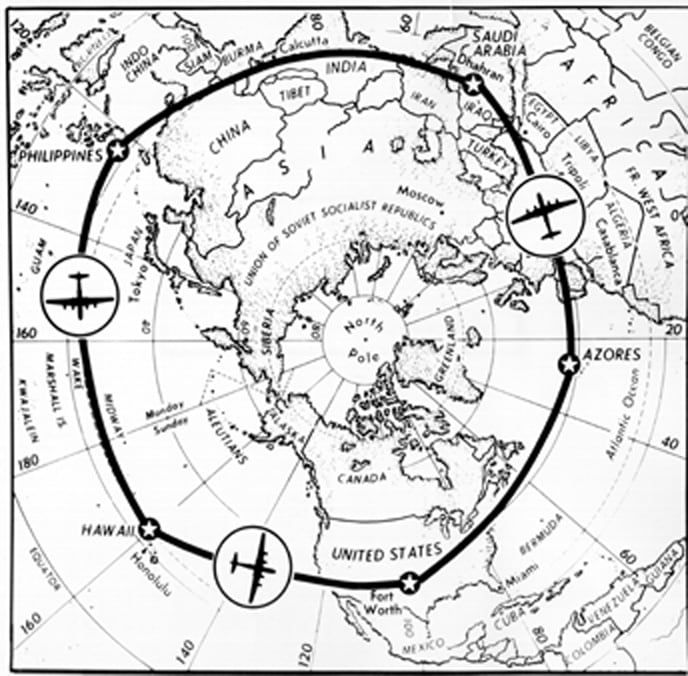Díky za článek. 
2.3. 1949 - First non-stop orbit of the Earth
Categories: Personalities , Calendar
The Boeing B-50 Superfortress was a postwar version of the B-29 bomber with new, more powerful Pratt & Whitney Wasp Major engines, a higher keel and other improvements.
The Lucky Lady II was a B-50 of the 43rd Bombardment Group, and an additional tank was fitted to the bomb bay for extended range before the record flight. There were two complete crews in the aircraft , which rotated every 6 hours. Captain James Gallagher was the flight commander.
The crew began its round-the-world journey at 12:21 p.m. on February 26, 1949. The aircraft took off from Carswell Air Force Base near Fort Worth, Texas, and headed east to the Atlantic Ocean. During the trip, it refueled four times in flight from KB 29M (a refueling version of the B-29), refueling near the Azores, over Saudi Arabia, off the Philippines, and off Hawaii.
The aircraft flew at altitudes between (3,000 to 6,100 m) and completed the round-the-world trip at an average speed of 401 km/h. After flying 37,742 km, the aircraft landed again at Carswell on 2 March at 10.31 a.m. The flight lasted 94 hours and one minute.
The crew were awarded the Distinguished Flying Cross and were honoured by the National Aeronautical Association as recipients of the Mackay Trophy, the best flight of the year.
General Curtis LeMay, Commander-in-Chief of the Strategic Air Command, declared after the completion of this flight that the U.S. Strategic Air Command could hit any place in the world with a nuclear bomb. This flight also spurred further developments in in-flight refueling of aircraft, especially fighter escort aircraft.
In 1955, the B-50s were retired from their primary role as a nuclear weapons carrier, and ten years later the last machine was retired. The fuselage of Lucky Lady II, designated B-50A-5BO 46-0010, is on display at the Chino Air Museum in California.



Jindrich Krejci, PilotK - Pilot Detectors
The article is included in categories:



